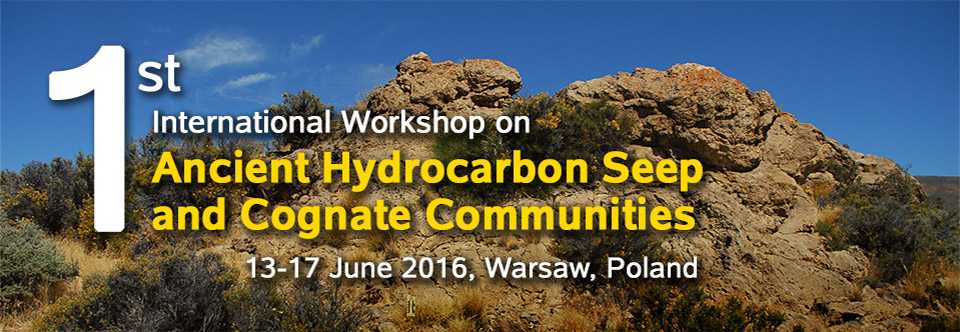
“CAUGHT IN THE ACT”; POSSIBLE STARFISH PREDATION ON PLESIOSAUR (ELASMOSAURUS: PLESIOSAUROIDEA) CARCASSES FROM THE UPPER CRETACEOUS OF HOKKAIDO, JAPAN
Aaron W. HUNTER1 and Kazuhiko SAKURAI2
1Department of Applied Geology, Western Australian School of Mines, Curtin University, GPO Box U1987, Perth 6845, Australia; 2Hobetsu Museum, Hobetsu, Mukawa-cho, Yufutsu-gun, Hokkaido, Japan.
Corresponding author: aaron.hunter@curtin.edu.au
We report the unusual occurrence of a starfish (Asteroidea) preserved within the metapodials
bones (flipper) of a plesiosaur. Not only is this specimen one of the few asteroids reported from
the Late Cretaceous of Japan, it also appears to be very well preserved with many of the marginal
plates found intact. A number of long necked Elasmosaurus (Plesiosauroidea) have been found
across the Upper Coniacian to Campanian of northern and central Hokkaido, Japan. At Hobetsu
Museum, the majority of Elasmosaurus skeletons are found in soft clastic sediments as semi-disarticulated
post-cranial skeletons preserving just one part of the animal. Many examples show
preserved limbs, paraxial section and the vertebral column. However, our example only preserves
the metapodials and phalanges (centre part of the flipper). These remains occur within lithofacies
interpreted as inner-shelf, a relatively deepwater substrate. We suggest that, like many plesiosaur
skeletons found in Hokkaido, either the limb became detached from the post-cranial skeleton
shortly after death or in early necrosis and sank to the seabed, or it became detached during the
subsequent benthic activity. Nevertheless, after death the plesiosaur would have become a “fall”
community, similar to post-Cenozoic whale falls. The preserved semi-articulated asteroid appears
to resemble the Late Cretaceous genus Recurvaster (Goniasteridea) found in the White Chalks of
England and Denmark. Recurvaster are rarely preserved articulated; this is normally a result of exceptional
preservation within soft sediments such as chalks and is seldom seen in the more clastic
sediments of Hobetsu, which preserve very few articulated multi-element taxa such as isocrinid
crinoids. We suggest that this starfish was either feeding on the carcass or preying on neighbouring
organisms within the nutrient-rich benthic island community on the seabed. The asteroid itself was
subsequently entombed, by a rare influx of soft sediment, with its marginal plates being held in
place by the weakly disarticulated metapodials of the Elasmosaurus, thus exceptionally preserving
both organisms together within the same concretion.
